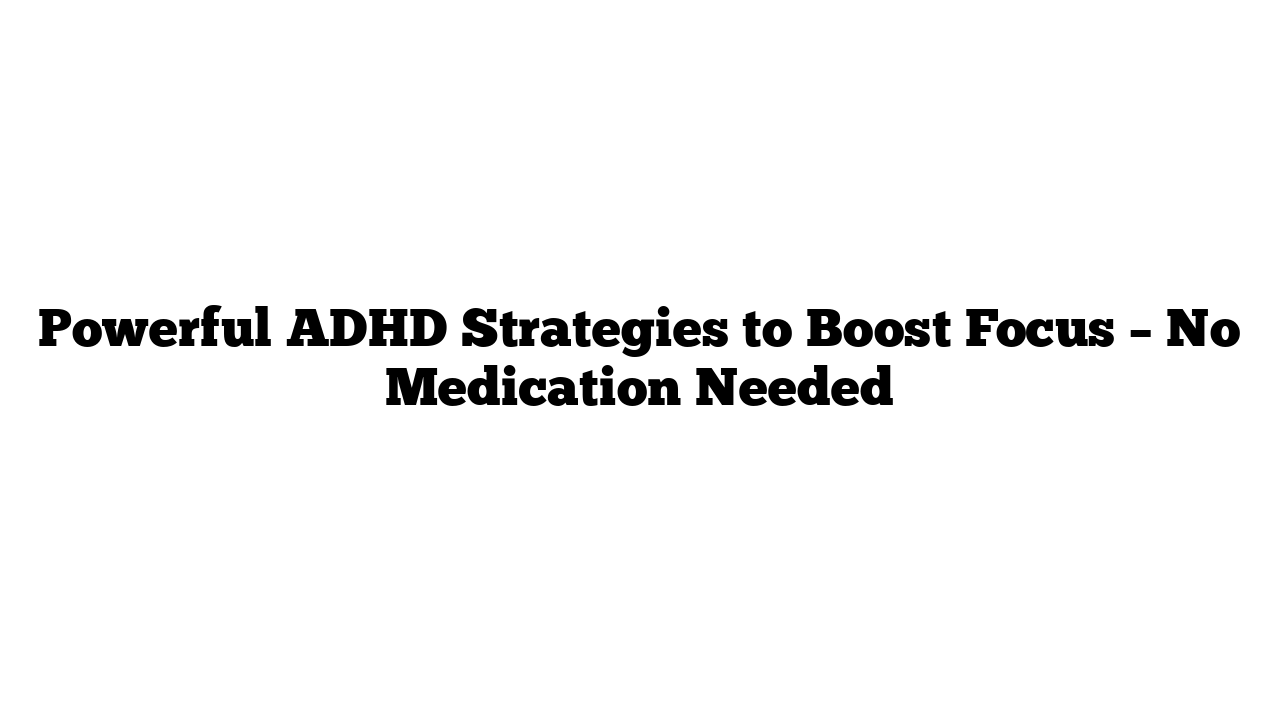Struggling with ADHD doesn’t mean you’re out of options. Here’s the good news: you can effectively manage your ADHD naturally, using a few simple, powerful strategies. These three techniques, backed by science, are what I used to replace my ADHD medication, helping me thrive and stay focused without side effects. Let’s dive in and explore these “instant fixes” that could transform how you manage ADHD every day.
Understanding How ADHD Medications Affect the Brain
Before we jump into the strategies, it’s helpful to know how ADHD medications work. ADHD often involves lower levels of key neurotransmitters like dopamine and norepinephrine, which are vital for focus and mood regulation. Medications increase these neurotransmitters temporarily, helping boost attention, focus, and decision-making.
However, medications often come with rebound effects (a temporary worsening of symptoms once the medication wears off) that can be tough to handle. Many people with ADHD experience side effects, and some even feel their brains need recovery time after the medication’s effects fade. So, what if you could boost these neurotransmitter levels naturally? Let’s explore three ways to do just that.
1. Move Your Body – The Power of Exercise
Movement has incredible effects on the ADHD brain. Studies have shown that exercise enhances executive functions like impulse control and attention in both kids and adults with ADHD. This is partly due to exercise’s ability to increase dopamine levels, which peaks around the end of a workout and stays elevated for about an hour afterward. Regular movement can even help sustain higher dopamine levels over time, naturally improving focus.
Key Points About ADHD and Exercise:
- Aerobic exercises like running or cycling, and high-intensity interval training (HIIT), are particularly effective.
- Aim for activities you genuinely enjoy – interest is key for the ADHD brain.
- Consistency is more important than intensity. Even 10 minutes of movement can bring benefits.
Pro Tip: ADHD often comes with anxiety, and exercise is proven to lower stress hormones like cortisol, making it especially helpful for those with both ADHD and anxiety.
Make It Work for You:
If long workouts feel overwhelming, start small. Take short walks, use the stairs, or do a few jumping jacks to break up the day. Every bit of movement helps. And don’t hesitate to switch things up if it keeps you engaged – consistency matters, not rigidity.
2. Practicing Mindfulness – Finding Calm and Focus
Mindfulness is often misunderstood when it comes to ADHD. It’s not about forcing yourself to sit still but rather learning to watch your thoughts without judgment. For many with ADHD, automatic negative thoughts (ANTS) are common and can drain mental energy. Practicing mindfulness can help you decide which thoughts deserve attention and which ones don’t.
Why Mindfulness Works:
- It helps manage ANTS by fostering a more intentional inner dialogue.
- By observing thoughts rather than engaging with them, you can prevent unnecessary stress and distractions.
How to Start with Mindfulness: For ADHD, active mindfulness practices like walking, focusing on body sensations, or even rubbing your fingers together can be very effective. These methods provide a balance of stimulation and relaxation, which makes them ADHD-friendly. Once you get curious about your inner thoughts, you’ll find that you can direct your focus rather than letting every thought demand attention.
3. Embrace the Sound of Brown Noise
Sound can be a powerful tool for focus, especially for people with ADHD. Brown noise (a steady, deep sound) can help settle the mind by reducing mental chatter without being too distracting. Studies show that people with ADHD often perform better with some background noise, as it provides a steady rhythm that helps them stay on task.
Types of Noise to Try:
- Brown Noise: Deep and grounding, excellent for focus.
- White Noise, Pink Noise, Green Noise: Helpful for both focus and sleep.
You can find hour-long loops of brown noise or other colored noises online or on many apps. Try different sounds and see what works best for you. And if you’re interested in learning more about this strategy, NBC News recently covered how effective brown noise can be for ADHD management.
Bonus Strategy: Curated External Triggers
One final tip that has helped me overcome ADHD-related executive paralysis is curated external triggers. This technique uses external cues to direct your focus, allowing you to work at high speeds and maintain attention. For more details, check out the complete guide available on our medicaltimes.io website, where we break down how to make this method work for you.
Take the Next Step
Living with ADHD can be challenging, but with the right tools, you can create a balanced, focused life. Give these strategies a try, and remember, it’s all about finding what works best for you. These fixes might just be the ADHD support you’ve been looking for. Visit medicaltimes.io website for more resources and guidance on building a life of clarity, energy, and purpose.
